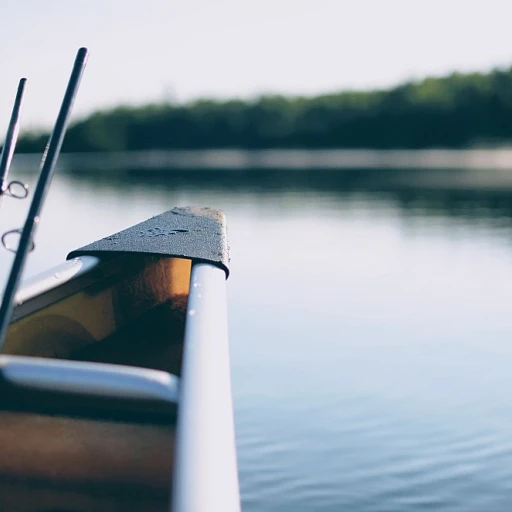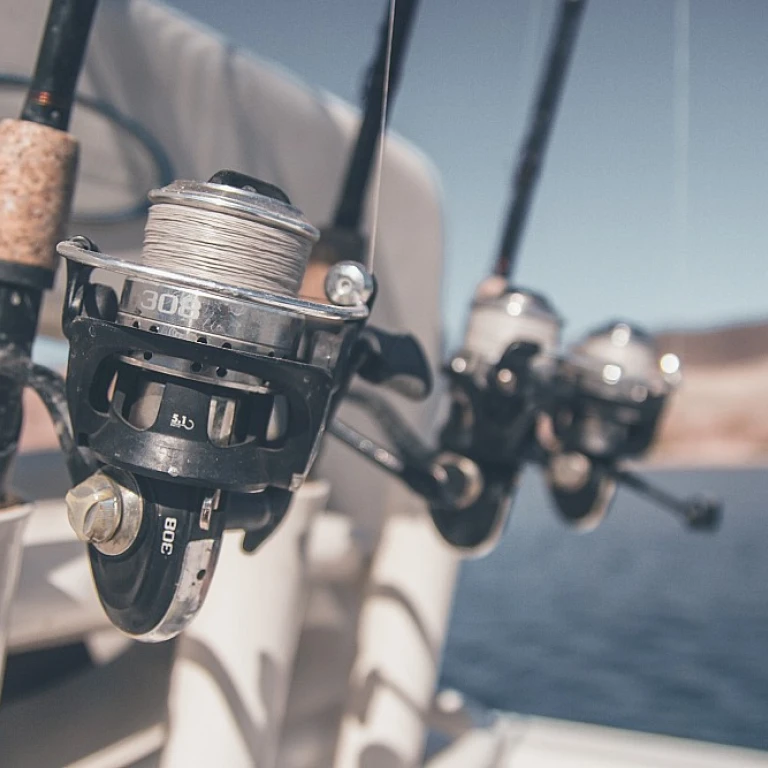Understanding the Daily Fishing Forecast
Decoding the Science Behind Fishing Forecasts
Fishing isn't just about luck—there's a science behind predicting when and where fish will be most active. Every seasoned angler understands the importance of planning according to the daily fishing conditions. By exploring these predictions, you can significantly increase your chances of having a fruitful day on the water.
When we talk about a daily fishing forecast, we are referring to analyses that consider various natural phenomena and how they impact fish behavior. Think of it as your daily weather forecast, but tailored specifically for marine life activity. These predictions are based on factors like weather conditions, water temperatures, and more, which we’ll explore in the subsequent parts.
Additionally, understanding these forecasts allows you to make more informed decisions about your fishing practices and the reasons behind them. For instance, knowing why certain times of the day or night might be better for fishing enables you to plan your trips more effectively, maximizing your catch potential.
For those who want to blend their fishing trips with some culinary adventure, figuring out how fish react to different environmental factors can also help you capture the best size and species for your cooking preferences. It's akin to translating scientific details into delicious outcomes—just as you would need a nuanced understanding to appreciate a technique like
blackened fish.
As you continue to learn about these factors, you'll discover that fishing is much more than a leisure activity. It's an intricate dance with nature, where your understanding of the ecosystem can lead to both success on the water and a deeper appreciation for the sport.
Weather's Role in a Good Fishing Day
The Influence of Weather on Your Fishing Success
When it comes to angling, understanding local weather patterns can significantly up your game, transforming a so-so outing into an extraordinary day on the water. Weather conditions such as temperature, cloud cover, and wind can impact fish behavior and dictate whether your catch will be plentiful or scarce.
Temperature plays a crucial role as fish are coldblooded animals and their activity levels are influenced directly by the water temperature. Warm temperatures can increase their metabolism, making them more active and, consequently, more likely to bite. Conversely, a sudden drop in temperatures can make them sluggish and wary.
Cloud cover and sunlight also matter. On a cloudy day, fish are generally more willing to roam and explore feed areas since the reduced light makes them feel safer from predators. This is why many anglers find overcast skies to be optimal for casting their lines.
Wind direction and speed can be another deciding factor for a successful fishing day. A gentle breeze can create a ripple on the water's surface, which can trick fish into thinking prey is near and ready for the strike. But a harsh wind, especially when it’s changing directions, can scatter fish and make it difficult for anglers to maintain their positions.
To ensure your fishing trip ends with a positive note, integrating weather conditions into your planning is as essential as knowing the best fishing times, which we will explore further.
For those planning to indulge in their fresh catch, explore some
catfish dinner ideas to complement your day's adventure with a comforting meal. Combine weather knowledge with culinary delights for a memorable fishing experience.
Moon Phases and Their Impact on Fish Bite
Moon Phases: The Hidden Fishing Ally
Understanding how moon phases influence fishing success can be a game-changer for anglers. Fishermen have long believed in the moon's power over fish behavior, and science backs them up—this celestial body impacts tides and aquatic life activity significantly. During a full moon, for instance, fish are often more active at night, making early mornings or late evenings prime times for fishing. Conversely, a new moon might see fish biting more during the day since nights are darker and more restful.
Many seasoned anglers have shared personal stories of successful trips aligned with these lunar phases, treating them as almost a secret weapon in their fishing arsenal. Whether targeting trout in serene rivers or seeking the thrill of catching the elusive world-record yellowfin tuna, anglers can incorporate the moon's influence into their strategy.
Learn more about the incredible journey of the world-record yellowfin tuna and see how timing and tactics align with nature's clockwork.
As you plan your fishing adventures, consider the moon's cycles—along with weather conditions and peak fishing times—as crucial elements in your success. Whether you fish by moonlight or the first light of dawn, aligning with these natural rhythms might be just what you need to snag your next big catch.
Best Fishing Times: When Fish Bite Most
Optimal Fishing Intervals: Seize the Day
Timing is everything when it comes to fishing success, and understanding the best periods to head out can make all the difference in your haul. The most prosperous intervals are often tied to the natural rhythms of fish and the aquatic environment.
Generally, fish are most active during the dawn and dusk periods, when the light conditions are lower, and the water temperature begins to change. These moments, known as the "Golden Hours," prompt fish to feed more vigorously. The tranquility of early morning and the onset of evening coincide with increased underwater motion and food availability, creating the perfect conditions for a bountiful catch.
Tides play another crucial role in determining productive fishing times, especially if you're fishing in coastal areas. As the tides shift, fish respond by moving towards shallower or deeper waters, depending on their feeding preferences. Aligning your fishing activities during the incoming or outgoing tides can boost your chances of encountering active and hungry fish.
Seasonal variations also influence when fish are most likely to bite. During the warmer months, fish might be deeper in the water during the heat of the day and come closer to the surface when the sun is less intense. In contrast, cooler months can see fish remaining active throughout the day if the water temperature remains stable. Keep in mind that these patterns can vary by species, so it's always useful to research your target catch.
By aligning your fishing trips with these optimal times, your chances of a successful day on the water increase significantly. And, remember that these principles are closely connected to the topics covered in the rest of our guide, including how the weather and moon phases interplay with fish activity.
Top Fishing Spots in the East United States
Prime Fishing Locations on the Eastern Seaboard
The Eastern United States boasts a diverse range of fishing spots that provide abundant opportunities for both seasoned anglers and beginners alike. From the cold waters of New England to the subtropical environments of Florida, the East Coast offers varied fishing experiences that cater to different preferences and skill levels.
Starting in the northeast, the coast of Maine is celebrated for its lobster fisheries, but it also offers fantastic saltwater fishing, particularly for striped bass. Visiting anglers find the rocky shoreline near Portland exceptional during the summer months when these fish make their migratory runs.
Moving south, the Chesapeake Bay in Maryland and Virginia is one of the largest estuaries in the United States and a prime fishing location. Known for its healthy populations of blue crab and oysters, the bay is a hotspot for striped bass, locally known as "rockfish." Late spring through fall marks the best periods for catching them in these waters.
Further down the coast, North Carolina’s Outer Banks provide a unique blend of surf fishing and deep-sea charters. The Gulf Stream’s proximity makes it possible to catch a variety of species, including tuna and mahi-mahi, making it a year-round destination.
For those in search of a warmer climate, Florida offers some of the richest fishing grounds. The Florida Keys, with their coral reefs, offer opportunities for both saltwater and freshwater fishing. Species like tarpon, bonefish, and snook are prevalent throughout the year. Regarding freshwater fishing, Florida's many lakes and rivers are well-known for largemouth bass, an angler favorite.
Indeed, a successful fishing trip greatly depends on choosing the right location, a topic closely related to understanding the best fishing times discussed in another part of this guide. Remember, no matter where you choose to cast your line, patience and persistence are key components to a rewarding fishing experience. Happy fishing!
Personal Fishing Stories and Tips
Sharing Personal Tales and Advice
There's something deeply satisfying about exchanging fishing stories and tips with fellow anglers. While understanding the daily forecast, weather's role, and moon phases are crucial for a successful fishing day, personal experiences can offer invaluable insights as well. In this section, we delve into some cherished personal stories and advice from seasoned anglers.
One veteran angler, Jerry Thompson, recounts a fateful morning in coastal Maine. Despite the overcast weather, which often signals a poor fishing day, and a less-than-ideal moon phase, he landed a record-breaking striped bass. His secret? Patience and a knack for adapting to the unexpected, echoing the importance of flexibility on the water. The weather might not be in your favor, but understanding the subtle shifts in the environment can still turn the tide in your favor.
Meanwhile, Sarah Jenkins, a fishing enthusiast from Florida, swears by her mid-afternoon trips based on her keen observations of fish behavior. She follows a routine that aligns her fishing times with peak activity periods of her favorite species. Her advice is to not only rely on forecasts but also to observe and learn from the fish themselves. Such insights can significantly enhance understanding and success on the water.
Location-specific tips can prove indispensable too. Harry Lawson, who frequently fishes in the lakes of the Northeast, highlights the effectiveness of choosing spots with natural cover. According to him, these areas tend to attract more fish, regardless of the time or weather. Harry's tales emphasize the significance of familiarizing yourself with your chosen fishing area.
Remember, while expert forecasts and scientific insights provide a valuable foundation, the wisdom gained through personal experience adds a unique layer to your fishing strategy. The next time you head out, consider both the structured forecasts and the personal stories shared by others to enhance your own fishing adventure.

